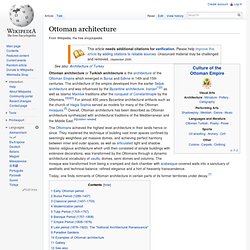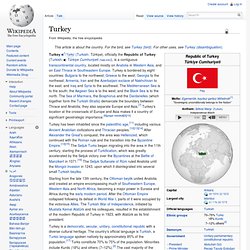

Turkey national football team. The Turkey national football team (Turkish: Türkiye Millî Futbol Takımı) represents Turkey in association football and is controlled by the Turkish Football Federation, the governing body for football in Turkey. They are affiliated with UEFA. Turkey has qualified three times for the World Cup finals, in 1950, 1954, and 2002, although they withdrew from the 1950 event. Turkey has also qualified three times for the UEFA European Championship, in 1996, 2000 and 2008. They have reached the semi-finals of three major tournaments: the 2002 World Cup, the 2003 Confederations Cup, and Euro 2008. History[edit] The Turkish national team played their first ever match against Romania in 1923 drawing 2–2.[2] Turkey played their first ever official match at the 1924 Summer Olympics losing 5-2 to Czechoslovakia. Soccer History - Football Origin. TvTube - Watch live TV channels online on the Internet for free. Top Ten Music Picks Turkey. SHOW TV Live - Watch SHOW TV - TURKEY.
Arts and Handicrafts of Turkey, Turkish culture. Ottoman architecture. Ottoman architecture or Turkish architecture is the architecture of the Ottoman Empire which emerged in Bursa and Edirne in 14th and 15th centuries.

The architecture of the empire developed from the earlier Seljuk architecture and was influenced by the Byzantine architecture, Iranian[1][2] as well as Islamic Mamluk traditions after the conquest of Constantinople by the Ottomans.[3][4][5] For almost 400 years Byzantine architectural artifacts such as the church of Hagia Sophia served as models for many of the Ottoman mosques.[5] Overall, Ottoman architecture has been described as Ottoman architecture synthesized with architectural traditions of the Mediterranean and the Middle East.[6][citation needed] Today, one finds remnants of Ottoman architecture in certain parts of its former territories under decay.[7] Early Ottoman period[edit] Bursa Period (1299–1437)[edit]
Turkish Culture Portal. Google Image Result for. Google Image Result for. The World Factbook. Location: This entry identifies the country's regional location, neighboring countries, and adjacent bodies of water.

Southeastern Europe and Southwestern Asia (that portion of Turkey west of the Bosporus is geographically part of Europe), bordering the Black Sea, between Bulgaria and Georgia, and bordering the Aegean Sea and the Mediterranean Sea, between Greece and Syria Geographic coordinates: This entry includes rounded latitude and longitude figures for the centroid or center point of a country expressed in degrees and minutes; it is based on the locations provided in the Geographic Names Server (GNS), maintained by the National Geospatial-Intelligence Agency on behalf of the US Board on Geographic Names.
Map references: This entry includes the name of the Factbook reference map on which a country may be found. Note that boundary representations on these maps are not necessarily authoritative. Turkey Guide. Turkey: Maps, History, Geography, Government, Culture, Facts, Guide & Travel/Holidays/Cities. Republic of Turkey Turkey is at the northeast end of the Mediterranean Sea in southeast Europe and southwest Asia.

To the north is the Black Sea and to the west is the Aegean Sea. Turkey. More information about Turkey is available on the Turkey Page and from other Department of State publications and other sources listed at the end of this fact sheet.

U.S. Turkey. Turkey i/ˈtɜrki/ (Turkish: Türkiye), officially the Republic of Turkey (Turkish: Turkey has been inhabited since the paleolithic age,[11] including various Ancient Anatolian civilizations and Thracian peoples.[12][13][14] After Alexander the Great's conquest, the area was Hellenized, which continued with the Roman rule and the transition into the Byzantine Empire.[13][15] The Seljuk Turks began migrating into the area in the 11th century, starting the process of Turkification, which was greatly accelerated by the Seljuk victory over the Byzantines at the Battle of Manzikert in 1071.[16] The Seljuk Sultanate of Rûm ruled Anatolia until the Mongol invasion in 1243, upon which it disintegrated into several small Turkish beyliks.

Starting from the late 13th century, the Ottoman beylik united Anatolia and created an empire encompassing much of Southeastern Europe, Western Asia and North Africa, becoming a major power in Eurasia and Africa during the early modern period. Etymology History. Turkey Travel Information and Travel Guide. A richly historical land with some of the best cuisine you will ever taste, one of the world’s greatest cities and scenery from white-sand beaches to soaring mountains.

An Epic History When you set foot in Türkiye (Turkey), you are following in the wake of some remarkable historical figures. Ottoman sultans used to luxuriate in İstanbul’s Topkapı Palace, surrounded by fawning courtiers, harem members, eunuchs and riches from an empire stretching from Budapest to Baghdad. Centuries earlier, Byzantine Christians cut cave churches into Cappadocia’s fairy chimneys and hid from Islamic armies in underground cities. At other points over the millennia, the Hittites built Hattuşa’s stone walls on the Anatolian steppe, Romans coursed down the Curetes Way at Ephesus (Efes), whirling dervishes gyrated with Sufi mysticism, and the mysterious Lycians left ruins on Mediterranean beaches. Cultural Depth Of course, Turkey’s current inhabitants are just as memorable. Ready to go? Read more.